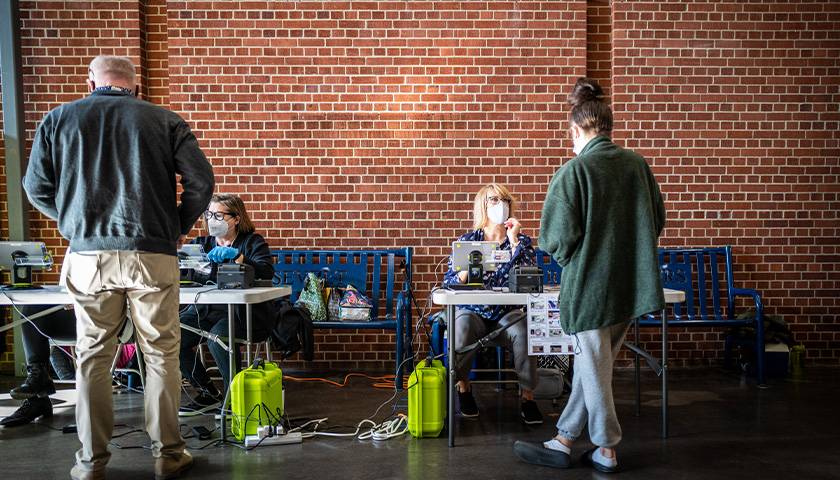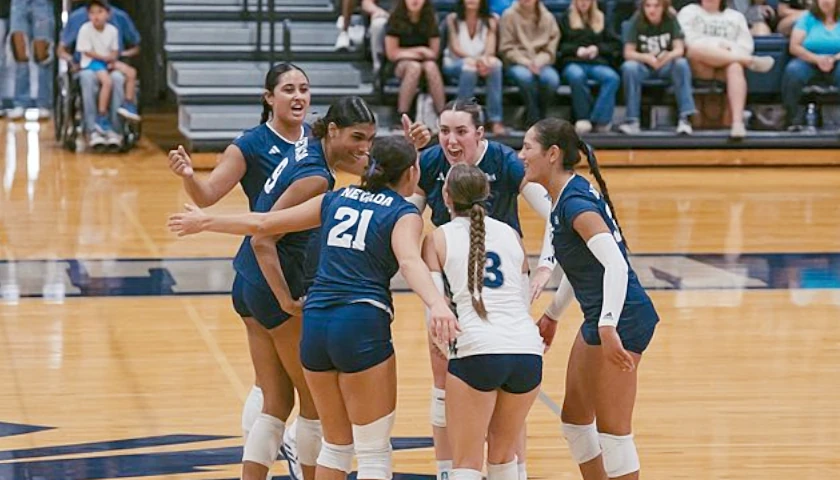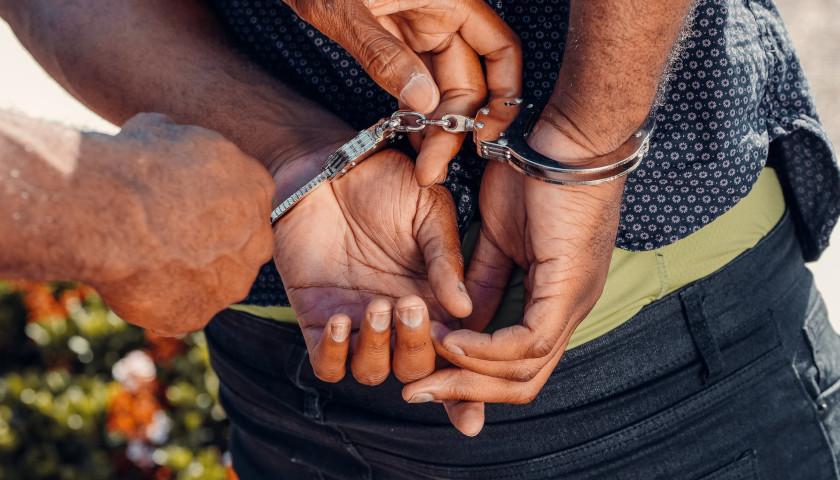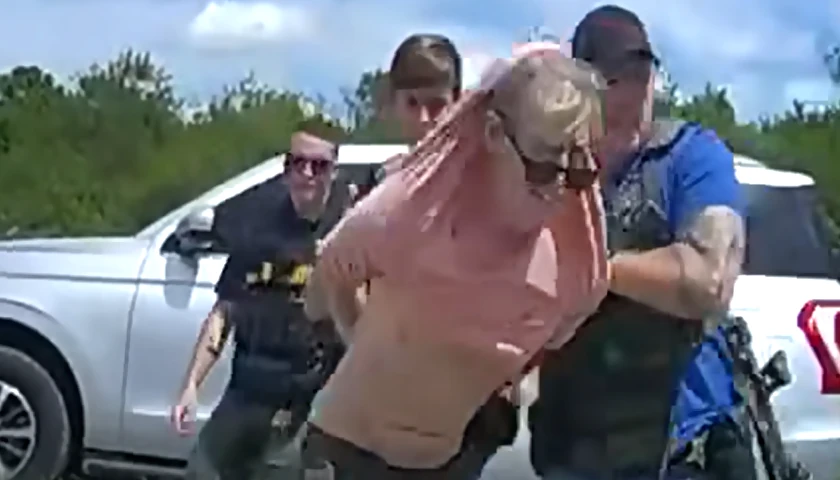by Alexa Schwerha
State laws that prohibit students from using their school-issued IDs to vote are unlikely to suppress youth voter turnout, experts told the Daily Caller News Foundation.
States including Idaho, Ohio and Georgia have laws on the books that limit what identification students can present to prove they are an eligible voter when at the polls. While critics of these laws argue that preventing student IDs from being used is a barrier to voting, several experts told the DCNF that there are other ways students can vote and that these laws likely will not have an overwhelming impact in preventing young voters from casting a ballot.
“A student ID isn’t in any way evidence that you are a resident of the state,” Hans von Spakovsky, Election Law Reform Initiative Manager at the Heritage Foundation, told the DCNF. “There are plenty of folks who go outside of their home state to college. They’ll get a student ID, they pay out of state tuition and they never become a resident of the state.”
von Spakovsky disputed the notion that the laws would work to suppress youth voters, referencing a National Bureau of Economic Research study that was published in 2019 and revised in 2021 which found that “strict” voter ID laws do not dissuade voters from casting a ballot. The study, which analyzed data between 2008 and 2018, determined that political party get-out-the-vote efforts in states that adopt such laws may “offset modest effects of these laws.”
Critics of laws prohibiting student IDs from being used at the polls frequently contend that, as students may not have a driver’s license or another form of identification, the restrictions on student IDs effectively suppress the vote of students, who are younger and tend to lean heavily Democratic.
 “This is just the latest in a long line of attacks on young people’s right to vote in Texas,” Claudia Yoli Ferla, executive director of MOVE Texas Action Fund, a left-of-center advocacy organization, told The New York Times.
“This is just the latest in a long line of attacks on young people’s right to vote in Texas,” Claudia Yoli Ferla, executive director of MOVE Texas Action Fund, a left-of-center advocacy organization, told The New York Times.
However, elections experts say these voter suppression claims don’t hold water.
“Time after time voter identification requirements have been proven to have no negative effect on turnout,” Jason Snead, Honest Elections Project executive director, told the DCNF. “In fact, in most cases when states adopt identification requirements you see turnout go up. I fully expect that that’s going to happen again as states continue to reexamine their existing identification requirements and move towards the gold standard, which is to require a government-issued ID.”
Georgia law is split on whether or not students can use their school-issued ID as a form of verification, according to the Secretary of State website. Students may present an ID issued by a public college or university, while private school IDs are ineligible.
Ohio students have never been permitted to use an ID as proof of residency, but previously were allowed to present an alternative form of verification including a W2, a utility bill, a bank statement or another official document, Rob Nichols, spokesperson for Ohio Secretary of State Frank LaRose, told the DCNF. The Buckeye State recently adopted a new law that mandates voters show their government-issued photo ID at the polls, which 98 percent of the state has already been doing.
The new law was used for the first time in Ohio’s primary election held on May 2, Nichols said. There is not enough data to show how the new law impacted youth turnout, but Nichols stressed that “any student who wants to vote in Ohio has a number of ways they can do it.”
“If you vote absentee, you don’t have to provide any photo ID. You just simply have to provide the last 4 digits of your social security number,” he explained to the DCNF. “There’s always an option. If you’re a student, you live in Pennsylvania but you go to school in Ohio and you do want to vote in an Ohio election, but you don’t want to cancel out your Pennsylvania driver’s license, you vote absentee, provide the last 4 of your [social] and you’re good to go.”
The argument that barring student IDs from being used at the polls has an effect on youth turnout is “overstated,” Andy Craig, Rainy Center director of election policy and Cato Institute adjunct scholar, told the DCNF. Regardless, he argued that laws cracking down on the verification “is pretty clearly to exclude students who don’t otherwise have another form of ID.”
“Having voter ID is popular and it can protect the public perception of integrity and that matters, and it is as worthwhile goal, but using this for partisan purposes to advantage one party or disadvantage one parties eligible voters is not a very good way to go about this, and it unnecessarily makes voter ID more controversial than it would otherwise be,” he said.
Many states that accept student IDs as a form of verification have had “no real problem,” according to Craig.
“The idea that [voter ID laws] amount to suppression or substantially reduce turnout is not born out by the evidence we’ve seen, but on the other hand, there is frank partisan intent in how exactly those are crafted,” Craig said. “And going beyond the legitimate election integrity issues, targeting a particular group … in order to advantage one party over the other, that’s not a legitimate purpose for these laws.”
Youth turnout in the 2022 midterm election was 23%, which was slightly lower than the 28% turnout in 2018, according to an analysis conducted by the Center for Information & Research on Civic Learning and Engagement (CIRCLE) at Tufts University’s Tisch College of Civic Life. Its analysis of youth voter trends showed that the demographic, aged 18-29, overwhelmingly support Democrat candidates.
“I think often the concern is there can be legitimate worries about the standards that the state’s colleges and universities are using,” Craig said. “You do want to make sure that this has some reasonable degree of security and that it indicates that if they’re a citizen or not then it shows they are eligible but in most states, particularly big state university systems, their ID is perfectly sufficient in terms of showing that this person is eligible and is who they say they are.”
Republican Idaho Gov. Brad Little signed the state’s voter ID law on March 15, and the law will take effect on January 1, 2024, according to its website. It requires eligible voters to provide proof of identities, including a valid driver’s license, a passport or other government-issued identification card, a “tribal identification card” or a concealed carry license, at the polls in order to cast a vote — but student IDs were scratched from the list.
“The problem with using student IDs to vote is that proof of identity isn’t required to get one,” Republican state Rep. Tina Lambert, who authored Idaho’s voter ID bill, told the DCNF.
Several groups pushed back against the Idaho law in court, CNN reported. Babe Vote and League of Women Voters of Idaho filed a lawsuit to block the new law and alleged that it is “part of a broader effort to roll back voting rights, particularly for young voters by weaponizing imaginary threats to election integrity.”
“The law prohibiting them [from] voting in Idaho isn’t likely to impact students or the state in a negative way,” Lambert told the DCNF. “It does guard against voter fraud. Most importantly, students are smart and savvy, and they know how to get a proper state ID for voting. Almost all of them already have one. They use it for all of the other things that they need a valid ID for.”
March for Our Lives Idaho and the Idaho Alliance for Retired Americans also filed a complaint in federal court and argued that the law will “make it harder for young voters to participate in Idaho’s elections.”
““The question is where should they be voting. Should they be voting in their college town or should they be voting where they maintain some legal residence?” Snead told the DCNF. “If they are legally residing in another jurisdiction, they should vote and they have the right to vote there. If they vote, however, in their college town where they are not a resident because a progressive advocacy group wants them to, they are harming the integrity of elections in that community because those communities’ residents have just as much right as anyone else to a representative government – a government that reflects their community, their interest, their issues. Their voices get drowned out when you have people who do not reside in those communities voting in those elections.
– – –
Alexa Schwerha is a reporter at Daily Caller News Foundation.
Photo “Election Day” by Phil Roeder. CC BY 2.0.




